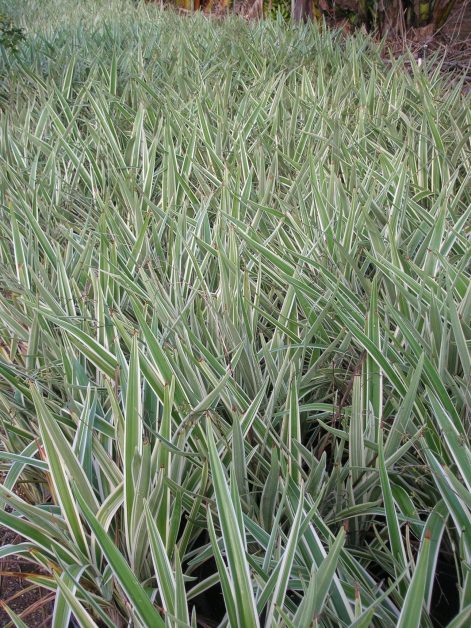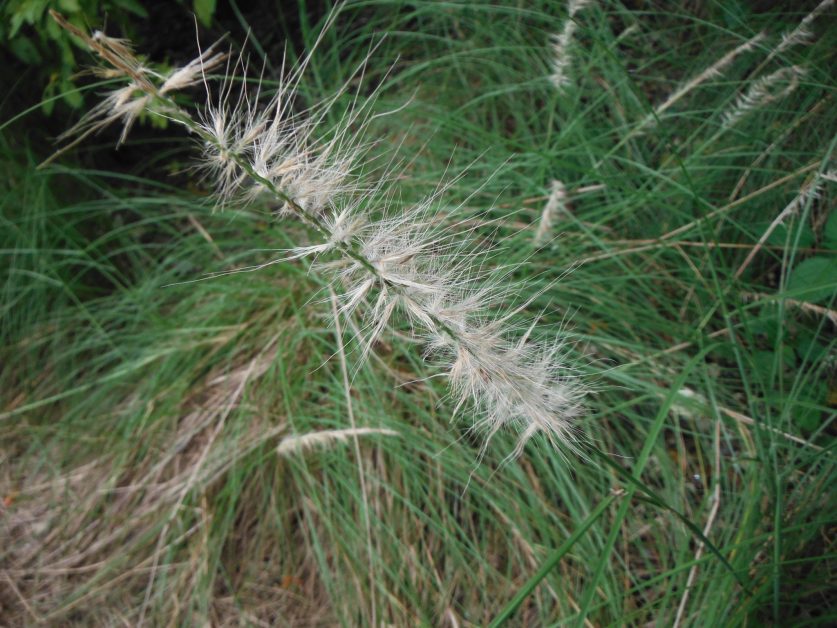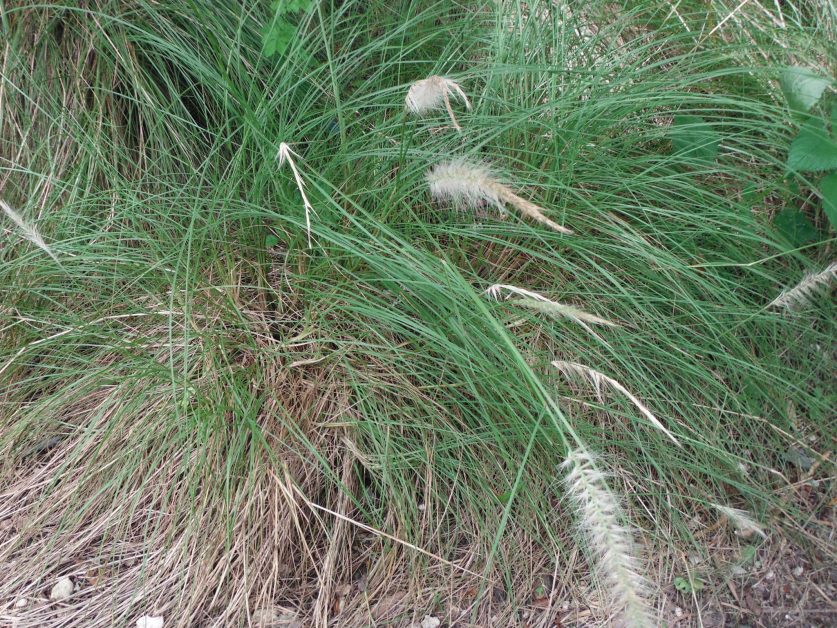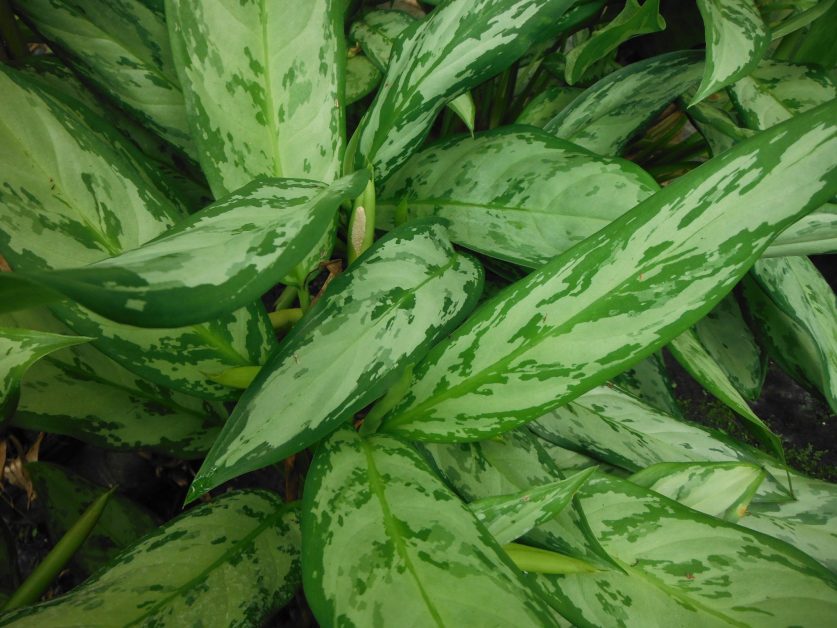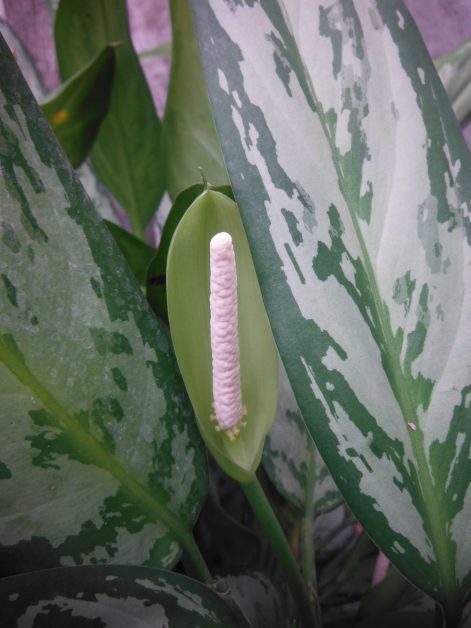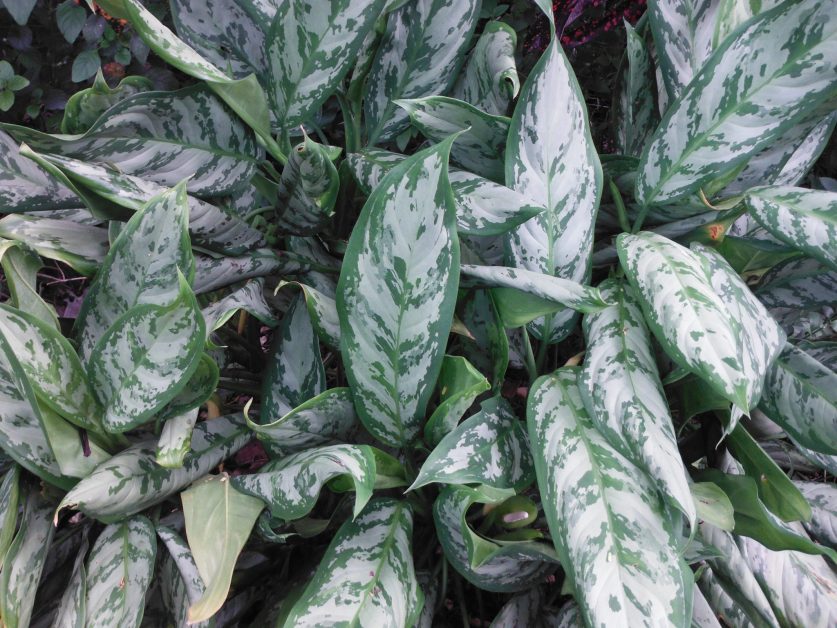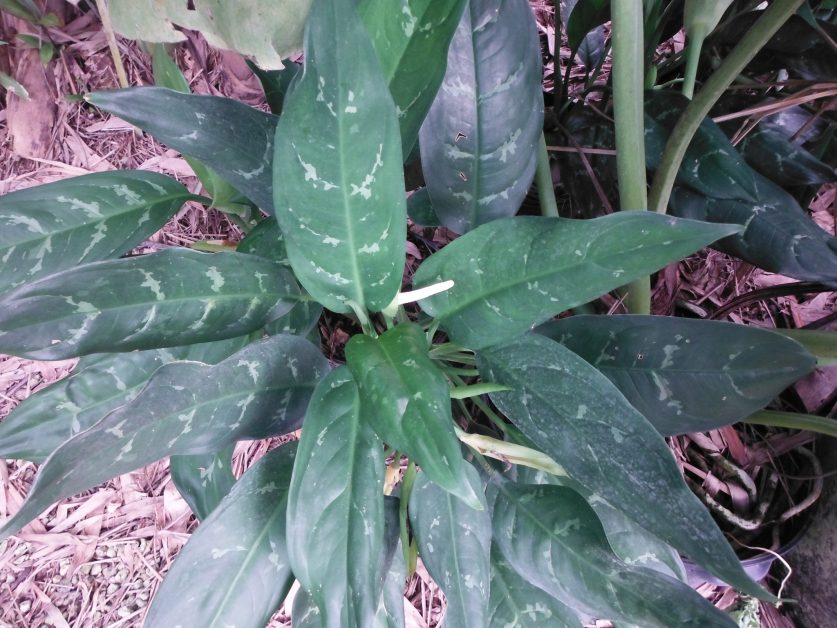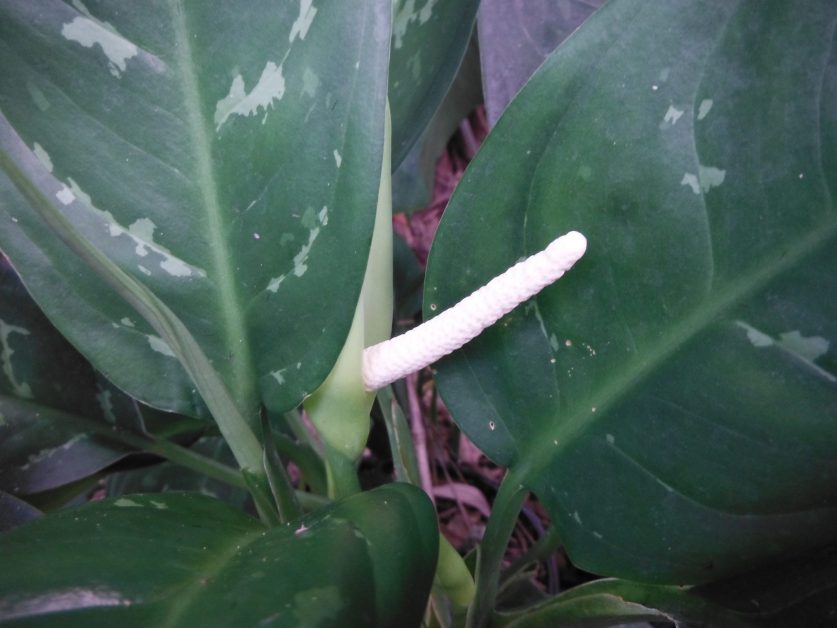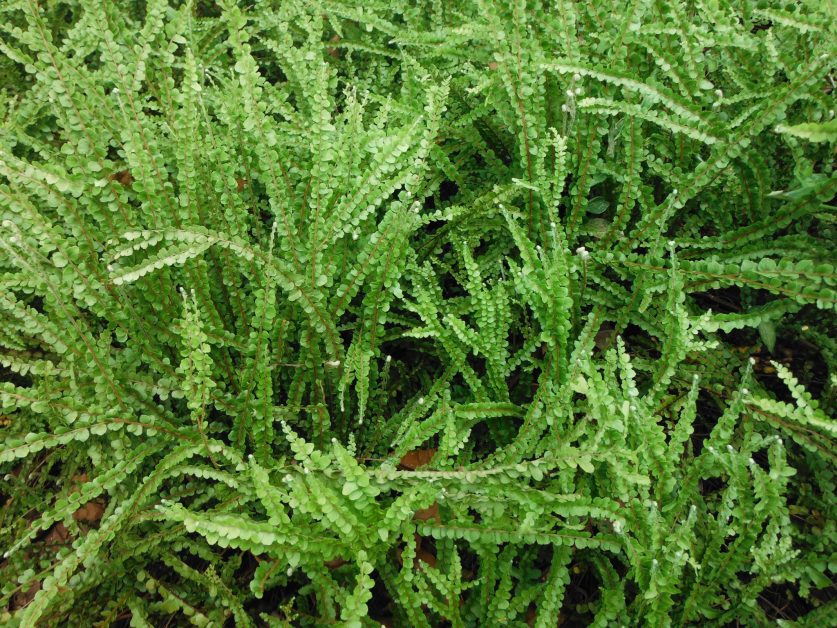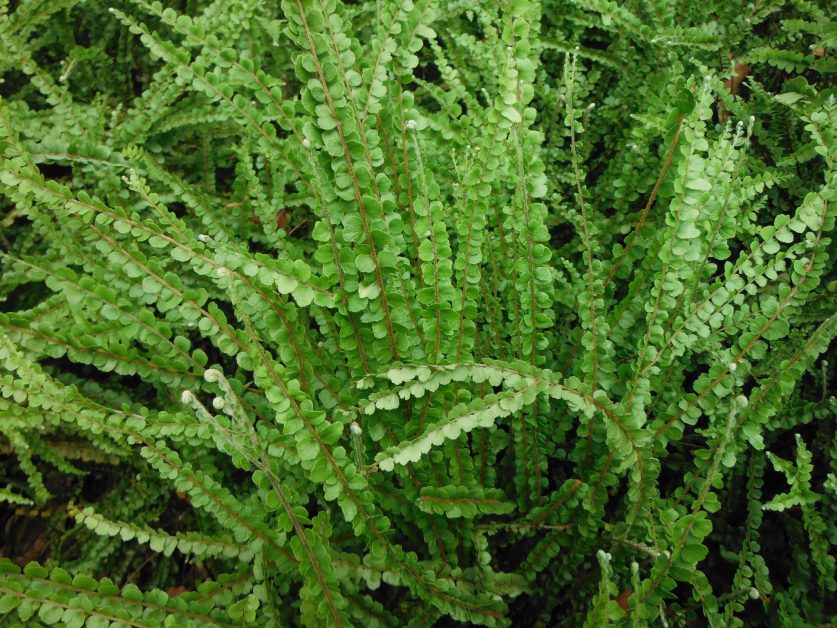Ground Covers That You May Not Have Thought About, Part VI
Today Richard Lyons’ Nursery today presents the sixth installment of its survey of plants that are sometimes overlooked for their potential as ground covers.
Variegated Flax Lily, Dianella tasmanica ‘Variegata’: This strap-leafed herbaceous perennial, native to southeastern Australia, including the island state of Tasmania, features an appealing contrast of colors: Green leaves with yellow-white striping, small blue-lavender flowers, and blue berries. Its clumping habit makes it a perfect ground cover. It tops out in the 18-24 in. range. Flax Lily is at home in the alkaline soils of southern Florida. It appears at its best when grown in filtered light.
White Fountain Grass, Pennisetum caudatum: Contrasting with its attractive green foliage, this vigorous-growing, cold-hardy grass puts on a striking show of fluffy white flower spikes as summer progresses. Maturing at about 4-5 ft., it is drought-tolerant once established, and performs best in full-sun settings. White Fountain Grass does not require more than small amounts of fertilizer to look its best; do not use lawn fertilizer. Extend the life of the flowers by cutting stalks for use in dry arrangements.
Aglaonema spp., Chinese Evergreen: These highly-versatile relatives of Dieffenbachia can be utilized to create a strikingly rich ground cover in lower-light areas of the garden. Originating in tropical and subtropical regions of Asia, Aglaonemas did not reach the New World until 1885, when specimens debuted at the Royal Botanic Gardens, Kew. The stems of Chinese Evergreens become a ground cover simply by falling over and creeping along the soil. Their leaves, both variegated and now increasingly suffused with color through hybridization, brighten areas where many plants won’t flower.
Lemon Buttons Fern or Tuberous Sword Fern or Fishbone Fern, Nephrolepis cordifolia: This fern is so popular that it is known by a number of common names; do not confuse it with Pellaea rotundifolia, the other Button Fern. Lemon Buttons Fern, native to northern Australia and Asia, is maintenance-free when placed in bright filtered light on well-drained soil. There may be some variation in this species; the ‘version’ offered by Richard Lyons’ Nursery grows about a foot tall. This fern is capable of withstanding the coldest weather that may invade southern Florida.
- Dianella tasmanica (Variegated Blueberry Flax Lily)
- Dianella tasmanica (Variegated Blueberry Flax Lily)
- Pennisetum caudatum (White Fountain Grass)
- Pennisetum caudatum (White Fountain Grass)
- Aglaonema commutatum ‘Silver Queen’ (Chinese Evergreen)
- Aglaonema commutatum ‘Silver Queen’ (Chinese Evergreen)
- Aglaonema commutatum ‘Silver Queen’ (Chinese Evergreen)
- Aglaonema commutatum (Chinese Evergreen)
- Aglaonema commutatum (Chinese Evergreen)
- Nephrolepis cordifolia (Button Fern)
- Nephrolepis cordifolia (Button Fern)

